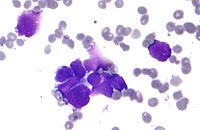
Genetic load has potential in large populations but is realized in small inbred populations
Sign Up to like & getrecommendations! Published in 2021 at "Evolutionary Applications"
DOI: 10.1111/eva.13216
Abstract: Populations with higher genetic diversity and larger effective sizes have greater evolutionary capacity (i.e., adaptive potential) to respond to ecological stressors. We are interested in how the variation captured in protein‐coding genes fluctuates relative to… read more here.
Keywords: diversity; deleterious mutations; populations realized; load ... See more keywords

Evolutionary rate and genetic load in an emblematic Mediterranean tree following an ancient and prolonged population collapse
Sign Up to like & getrecommendations! Published in 2020 at "Molecular Ecology"
DOI: 10.1111/mec.15684
Abstract: Severe bottlenecks significantly diminish the amount of genetic diversity and the speed at which it accumulates (i.e., evolutionary rate). They further compromise the efficiency of natural selection to eliminate deleterious variants, which may reach fixation… read more here.
Keywords: diversity; evolutionary rate; load; population ... See more keywords

From high masked to high realized genetic load in inbred Scandinavian wolves
Sign Up to like & getrecommendations! Published in 2022 at "Molecular Ecology"
DOI: 10.1111/mec.16802
Abstract: When new mutations arise at functional sites they are more likely to impair than improve fitness. If not removed by purifying selection, such deleterious mutations will generate a genetic load that can have negative fitness… read more here.
Keywords: genetic load; deleterious mutations; inbred scandinavian; high masked ... See more keywords

Abstract 514: Genetic load in cancer cell populations
Sign Up to like & getrecommendations! Published in 2017 at "Cancer Research"
DOI: 10.1158/1538-7445.am2017-514
Abstract: Populations accumulate deleterious mutations that have yet to be removed by natural selection. This mutated portion of the population that does not contribute to its fitness is called the genetic load and is proportional to… read more here.
Keywords: cell; rate; cancer; growth ... See more keywords